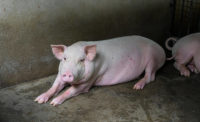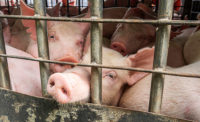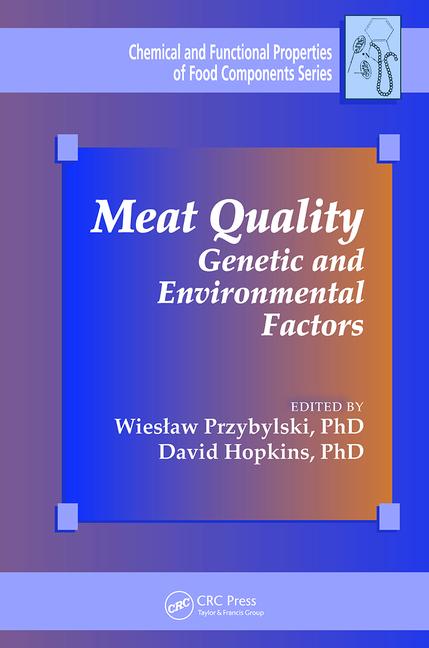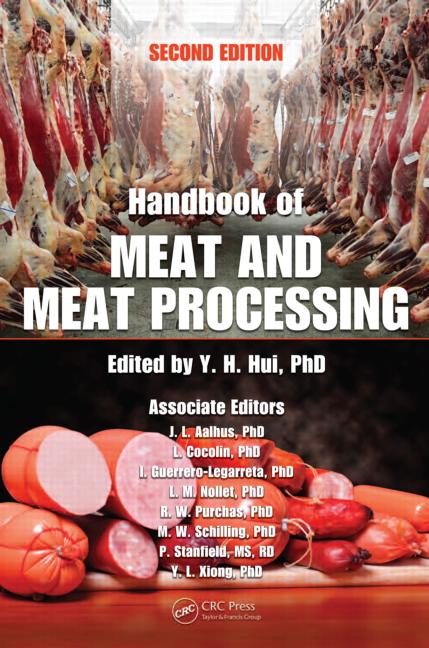Processing Tech
De-stressing slaughter
Low-stress handling is key to humane slaughter and stunning practices.




Although Dr. Temple Grandin wrote the book on best animal welfare practices, much can still be learned to make slaughter and stunning practices more humane.
“As Cargill delivers protein to the tables of the world, we work hard every day to ensure animals are treated with respect and dignity,” says Lacey Alexander, North American beef welfare lead at Cargill, based in Wichita, Kan. “Low-stress handling is key to cattle comfort during their stay in lairage and throughout their journey to the knock box.”
As of Jan. 1, all drivers entering a Cargill beef slaughter establishment will be Beef Quality Assurance Transportation (BQAT) certified, to ensure cattle are loaded, transported and unloaded in a safe and humane manner.
Low-stress handling can go beyond widely accepted handling principles such as small groups, no prods, quiet handlers, flight zone and point of balance, says Alexander.
“We believe low stress can only be achieved when employees are engaged,” she says. “A good barn culture starts with management who should provide a work environment where every employee knows where they fit and why they matter.”
Last year, Cargill also rolled out robot cattle movers in several of its facilities.
“One innovation we are excited about is new vibrating air prods our Dodge City facility designed,” says Alexander. “The old version of the vibrating air prod was rigid. The new version includes a spring and hose to the end of the device giving it more flexibility.”
Now, there is no way animals can be poked with the tool. Cargill has shared the design with several other packers.
Cargill’s team also is working with Lily Edwards-Callaway, Ph.D, and her team from Colorado State University to study the differences between one stun vs. two stuns (security stunning) and the differences between the USSS-1 and USSS-21 pneumatic stunners as they relate to cattle insensibility. “We should have results in the spring that we plan to share with others in the industry,” Alexander says.
In addition, Cargill is interested in studying better ways to provide shade for cattle in lairage and stocking density in trailers, says Alexander.
Small changes, large impact
Sometimes, simple changes have a large impact. According to Ben Buchanan, a small-scale slaughter manager/trainer based in Pittsburgh and trained by Grandin, just covering gates with cardboard so cows can’t see any movement in the restraining chute helps reduce animal stress. Or, employees can wait until the cattle turn their head before stunning them.
“If we have the right set-up — standing above them and not putting an arm where it can get broken — then we will use a stunner,” Buchanan says. “Otherwise, on a small farm, we use a .22 if we can’t get as close to the cows.”
Bison is appearing on more restaurant menus, but these animals have a thicker cranium than cows, so their heads are too thick for stunning. “There is not a good methodology for stunning beyond shooting them,” says Brandon Hernandez, co-founder of Whole Brain Consulting, based in Chicago. “Temple Grandin’s procedures are still in place for calming the bison ahead of slaughter, but plants have to resort back to old-school methods so the animal will not suffer.”
Some farmers prefer utilizing a smaller kill operation.
“The most humane way to slaughter an animal is on the farm, with a mobile slaughter plant,” says Buchanan, who plans to start one soon. “I’m assuming 90 percent of my business will be custom, and those farmers want accountability and none of the trauma to the animals that’s associated with transportation.”
Small kill floors can usually accommodate eight to 10 animals a day. The animals are stunned outside the unit and then brought into a standard kill floor, says Buchanan. Employees who work with animals are always advised to remain calm before slaughter.
“Don’t use the cattle stunner unless you have to, because they are not meant for moving cattle around and you will rile them up,” Buchanan says. Cows are already uneasy being inside buildings. Experience will help employees determine what makes cattle nervous, such as sudden movements.
“Contrast variations and keeping people out of sight when moving cattle are useful,” he says. “Also, plants can cut grooves in concrete flooring so the cattle don’t slip.”
Low-stress handling
For chickens, it’s suggested they be placed in transport crates at night or early morning, so they experience less stress.
“Putting them in crates is a big stress point for chickens,” says Mike Badger, executive director of the American Pastured Poultry Producers Association, based in Hughesville, Pa. “The less stress there is, the better it is.”
In the summer when temperatures can surge to 80 to 90 degrees outside, it’s also ideal to put fewer birds than usual in the crates to maintain airflow, he says. Although a larger processor may still load 100 to 500 or even 1,000 birds on a flatbed truck.
“Chickens may look crowded, but they would become frightened if they were thrown loose in the truck and might trample each other if scared,” Badger says. The drive to the processing facility can be unpredictable.
“Some processors have no choice but to drive four hours to a processing facility,” Badger says. “But the drive does carry risks of heat, bad weather, the truck breaking down and other elements out of their control.”
Once at the processing facility, big integrators like Tyson historically stun the birds, says Badger. “Employees put the birds on shackles, then dip them into a water bath and cut their throats,” he says. “The argument is that is the most humane way to slaughter the birds.”
Pasture poultry processors, however, process birds in the halal or kosher method of putting the birds upside down in a kill cone that hugs them before an employee cuts their throat. Birds lose consciousness immediately or within seconds.
“Stunning is about efficiency,” Badger says. “But shackling the bird upside down before the water bath is stressful and could even be inhumane. Some birds are scalded alive or miss-stunned.”
Badger doesn’t believe chamber stunning is ultimately as humane as some in the industry say it is, based on the human element — or lack thereof.
“Chambers may have the appearance of looking humane, but we think the slaughter process can’t be humane without humans,” Badger says. “If we’re killing 150 birds every minute, then how humane is that compared to on our farms, where we process 150 to 500 or 1,000 a day?”
Hernandez believes the stress-free entry into the chambers helps when it comes to hog processing.
“Basically, the pigs walk into a chamber and go to sleep, which is humane,” Hernandez says. “Usually, a gate automatically opens and about a dozen pigs enter and walk a path with other gates slowly opening. They are not prodded or stunned, so their walk is as stress-free as possible.”
A human connection
Hiring and retaining the best talent becomes crucial when it comes to slaughter.
“We believe low employee turnover is crucial to low-stress handling,” Alexander says. “Like any job, practice makes perfect, so the longer employees stay, the better they get at their job duties.”
Otherwise, undertrained staff who have no experience with animals can be too aggressive, manhandle and yell at the animals, Buchanan says.
Undertrained staff also lead to U.S. Department of Agriculture (USDA) violations. Of course, facilities have to meet basic standards for humane treatment, such as preventing fall hazards, cuts or puncture hazards, says Buchanan. Additionally, processors need to remember that it’s hard to ask people to kill animals every day.
“It’s an emotional experience, not the happiest job in the world — and it shouldn’t be, they shouldn’t relish it,” Badger says. “In our community, we restrict slaughter to once a day or month. Even bigger plants only slaughter once a week, usually.”
This restriction helps with the emotional component of the job, but then plants have to rely on part-time help. This is where barn culture and employee engagement come into play.
“If we consistently communicate expectations and goals, provide solid training, listen to employees and utilize motivational coaching, we should be providing an environment that makes folks want to stay a part of our team,” Alexander says. NP
Looking for a reprint of this article?
From high-res PDFs to custom plaques, order your copy today!











